Veterinary Endoscopy for the Small Animal Practitioner 2nd Edition
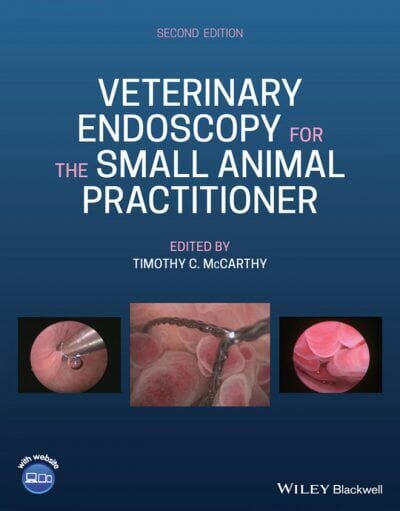
By Timothy C. McCarthy
Veterinary Endoscopy for the Small Animal Practitioner, 2nd Edition PDF gives veterinarians guidance in incorporating diagnostic endoscopy, interventional endoscopy, and minimally invasive soft tissue surgery into their small animal practices. This highly practical reference supports practitioners in adding and effectively using endoscopy techniques in their practices. With a clinically oriented approach, it focuses on applications for rigid and flexible endoscopy, making comprehensive information on these techniques easily accessible.
The book covers soft tissue endoscopy, including airway endoscopy, gastrointestinal endoscopy, diagnostic and operative laparoscopy, diagnostic and operative thoracoscopy, urogenital endoscopy, and otoscopy. Thousands of images, including endoscope images and clinical photographs, enhance the text.
- Covers diagnostic endoscopy, interventional endoscopy, and minimally invasive soft tissue surgery
- Includes thousands of images to illustrate endoscopy concepts for veterinarians
- Provides a clinically oriented reference book for using rigid and flexible endoscopy in a small animal practice
- Supports veterinarians who are seeking to increase their services and enhance their revenue streams
Any practitioner who is using or preparing to use endoscopic techniques will find Veterinary Endoscopy for the Small Animal Practitioner an essential practice resource.
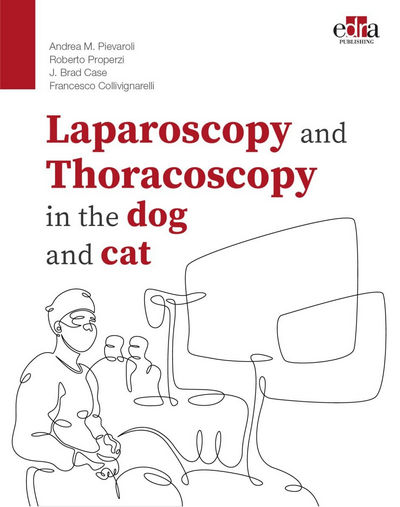
List of Contributors xvii
Preface xix
Acknowledgements xxi
About the Companion website xxiii
1 Introduction and History of Endoscopy 1
Timothy C. McCarthy
1.1 Introduction 1
1.2 The History of Endoscopy 1
1.3 Clinical Application in Veterinary Medicine 6
References 7
2 Instrumentation for Endoscopy 9
Timothy C. McCarthy
2.1 Endoscopy Room Setup and Organization 9
2.2 Instrumentation for Small Animal Endoscopy 10
2.2.1 The Endoscopy Video Tower 10
2.2.2 Video Cameras 10
2.2.3 Video Monitors 11
2.2.4 Light Source 12
2.2.5 Documentation Equipment 13
2.2.6 Power Equipment 14
2.2.6.1 Radio-Frequency Instrumentation 14
2.2.6.2 Vessel Sealing Devices 14
2.2.7 Irrigation Fluid Management Systems 16
2.2.7.1 Gravity Flow 16
2.2.7.2 Pressure-Assisted Flow 17
2.2.7.3 Mechanical Fluid Pumps 17
2.2.8 Operating Tables 17
2.2.9 Rigid Telescopes 17
2.2.10 Flexible Endoscopes 20
2.2.11 Sheaths, Cannulas, and Trocars 21
2.2.12 Diagnostic and Operative Instruments 24
3 Gastrointestinal Endoscopy 27
Reto Neiger and Christiane Stengel
3.1 Equipment 27
3.1.1 Flexible Endoscopy 27
3.1.2 Rigid Endoscopy 30
3.1.3 Ancillary Equipment 30
3.1.3.1 Biopsy Forceps 31
3.1.3.2 Foreign Body Retrieval Instruments 31
3.1.3.3 Others 31
3.2 Technique 32
3.2.1 Handling the Endoscope 32
3.2.2 Handling Accessory Instruments 32
3.2.3 Taking Biopsies and Brush Cytology 33
3.2.4 Patient Preparation 36
3.2.5 Anesthesia 37
3.2.6 Complications and Contraindications 37
3.2.7 Endoscopic Training 38
3.3 Esophagoscopy 39
3.3.1 Indications, Limitations 39
3.3.2 Procedure 39
3.3.3 Normal Findings 41
3.3.4 Abnormal Findings 41
3.4 Gastroscopy and Duodenoscopy 48
3.4.1 Indications, Limitations 48
3.4.2 Procedure 50
3.4.3 Normal Findings 55
3.4.4 Abnormal Findings 56
3.5 Colonoscopy/Ileoscopy 60
3.5.1 Indications, Limitations 60
3.5.2 Procedure 63
3.5.3 Normal Findings 68
3.5.4 Abnormal Findings 68
3.6 Therapeutic Flexible GI Endoscopy 71
3.6.1 Foreign Body Retrieval 71
3.6.1.1 Esophageal Foreign Body Removal 74
3.6.1.2 Duodenal Foreign Body Removal 77
3.6.1.3 Colonic and Rectal Foreign Body Removal 78
3.6.2 Feeding Tube Placement 78
3.6.2.1 Procedure 79
3.6.2.2 Tube Management 81
3.6.2.3 Replacement and Removal 83
3.6.3 Stricture Dilation 83
3.6.4 Stent Placement 86
3.6.5 Polyp Removal 87
3.7 Additional Techniques in GI Endoscopy 87
3.7.1 Capsule Endoscopy 87
3.7.2 Double Balloon Endoscopy 87
3.7.3 Confocal Endomicroscopy 88
3.7.4 Natural Orifice Transluminal Endoscopic Surgery 88
3.7.5 Endoscopic Retrograde Cholangiopancreatography 88
3.8 Care and Cleaning of GI Endoscopic Equipment 88
3.8.1 Pre-Cleaning 89
3.8.2 Manual Cleaning 90
3.8.3 Machine Cleaning 91
3.8.4 Storage 92
3.8.5 Sterilization or High-Level Disinfection 93
References 93
4 Rhinoscopy 99
Timothy C. McCarthy
4.1 Introduction 99
4.2 Indications 100
4.3 Instrumentation 102
4.4 Preparation of the Patient 104
4.5 Technique 105
4.5.1 Radiographic Imaging 105
4.5.2 Culture Sample Collection 108
4.5.3 Rhinoscopy 108
4.5.4 Frontal Sinoscopy 112
4.6 Normal Nasal Cavity and Frontal Sinuses 113
4.7 Nasal Pathology 120
4.7.1 Nasal Neoplasia 120
4.7.2 Mycotic Rhinitis and Sinusitis 142
4.7.2.1 Aspergillosis 142
4.7.2.2 Cryptococcosis 152
4.7.3 Allergic Rhinitis 153
4.7.4 Nasal Foreign Bodies 157
4.7.5 Rhinitis Secondary to Dental Disease 159
4.7.6 Nasal Turbinate Infarction 161
4.7.7 Traumatic Rhinitis 164
4.7.8 Nasal Disease Secondary to Otic Diseases 165
4.7.9 Parasitic Rhinitis 169
4.7.10 Canenoid and Felenoid Diseases 171
4.7.11 Nasal Hamartomas 172
4.7.12 Viral Rhinitis 173
4.7.13 Bacterial Rhinitis 173
4.7.14 Nasal Vascular Dysplasia 174
4.7.15 Epistaxis 174
4.7.16 Rhinitis of Undetermined Origin 175
4.7.17 Brachiocephalic Nasal Airway Syndrome 179
4.7.18 Nasopharyngeal Stenosis 181
4.7.19 Nasal Lymphoid Hyperplasia 185
4.7.20 Nasal Angiofibroma 187
References 192
5 Bronchoscopy 195
Brendan C. McKiernan
5.1 Introduction 195
5.2 Equipment 195
5.2.1 Equipment Care and Cleaning 195
5.3 Indications and Contraindications of Bronchoscopy 196
5.4 Anesthesia for Bronchoscopy 196
5.4.1 Monitoring and Positioning the Patient for Bronchoscopy 198
5.5 Bronchoscopic Training 199
5.6 Bronchoscopic Procedure 199
5.7 Normal and Abnormal Bronchoscopic Findings 201
5.8 Sample Procurement and Handling 206
5.9 Summary 213
References 214
6 Cystoscopy 217
Timothy C. McCarthy
6.1 Introduction 217
6.2 Cystoscopy Indications 218
6.2.1 Chronic Cystitis 219
6.2.2 Hematuria 219
6.2.3 Tenesmus or Stranguria 219
6.2.4 Increased Frequency of Urination 219
6.2.5 Urinary Incontinence 219
6.2.6 Ureteroceles 220
6.2.7 Alteration of the Urinary Stream 220
6.2.8 Trauma 220
6.2.9 Cystic and Urethral Calculi 221
6.3 Instrumentation for Cystoscopy 221
6.3.1 Transurethral Cystoscopy in Female Dogs and Cats 222
6.3.2 Instrumentation for Transurethral Cystoscopy in Male Dogs 226
6.3.3 Instrumentation for Transurethral Cystoscopy in Male Cats 227
6.3.4 Instrumentation for Prepubic Percutaneous Cystoscopy 227
6.3.4.1 Telescopes 227
6.3.4.2 Sheaths 227
6.3.4.3 Sharp Trocars and Blunt Obturators 227
6.3.4.4 Second Puncture Cannulas 227
6.3.4.5 Operative Instrumentation 228
6.3.5 Instrumentation for Percutaneous Perineal Cystoscopy in Male Dogs 228
6.3.6 Instrumentation for Laparoscopic-Assisted Cystoscopy 228
6.3.6.1 Telescopes 228
6.3.6.2 Flexible Cystourethroscopes 228
6.3.6.3 Cannulas and Sheaths 228
6.3.6.4 Operative Instrumentation 229
6.3.7 Instrumentation for Lithotripsy 229
6.4 Techniques for Transurethral Cystoscopy 230
6.4.1 Patient Preparation 230
6.4.2 Transurethral Cystoscopy in Female Dogs and Cats 231
6.4.3 Transurethral Cystoscopy in Male Dogs 240
6.4.4 Transurethral Cystoscopy in Male Cats 244
6.4.5 Technique for Prepubic Percutaneous Cystoscopy 247
6.4.5.1 The Original Technique 247
6.4.5.2 Modified PPC Technique 250
6.4.5.3 Diagnostic Sample Collection 250
6.4.6 Technique for Laparoscopic-Assisted Cystoscopy 250
6.4.6.1 Diagnostic Sample Collection 257
6.4.7 Photodynamic Diagnostics with Cystoscopy 257
6.5 Normal Endoscopic Anatomy of the Lower Urinary Tract 257
6.5.1 Transurethral Cystoscopy in Female Dogs and Cats: Vagina 257
6.5.2 TUC in Female Dogs and Cats: Urethra and Bladder 262
6.5.3 Transurethral Cystoscopy in Male Dogs 267
6.5.4 Transurethral Cystoscopy in Male Cats 268
6.5.5 Normal Endoscopic Anatomy: LAC and PPC in the Dog and Cat 269
6.6 Diagnoses with Cystoscopy 269
6.6.1 Cystitis and Urethritis 269
6.6.1.1 Interstitial Cystitis 270
6.6.1.2 Follicular Cystitis 270
6.6.1.3 Polypoid Cystitis 273
6.6.1.4 Chronic Diffuse Cystitis 275
6.6.1.5 Urethral Strictures 280
6.6.1.6 Urethrocutaneous Fistula 282
6.6.1.7 Prostatitis 282
6.6.2 Neoplasia of the Lower Urinary Tract 284
6.6.2.1 Transitional Cell Carcinomas 284
6.6.2.2 Other Tumors of the Lower Urinary Tract 294
6.6.2.3 Vaginal Tumors and Masses 294
6.6.3 Cystic and Urethral Calculi 300
6.6.3.1 Oxalate Calculi 301
6.6.3.2 Struvite Calculi 301
6.6.3.3 Urate Calculi 302
6.6.3.4 Silica Calculi 302
6.6.4 Anatomic Abnormalities 307
6.6.4.1 Vaginal Anatomic Abnormalities 307
6.6.4.2 Ectopic Ureters and Ureteroceles 308
6.6.4.3 Ureteroceles 313
6.6.4.4 Ectopic Ureters in Male Dogs 315
6.6.4.5 Bladder Diverticula 317
6.6.4.6 Vascular Dysplasia 320
6.6.5 Urinary Tract Trauma 320
6.6.6 Renal Hematuria 325
6.7 Interventional and Operative Cystoscopy 326
6.7.1 Minimally Invasive Management of Inflammatory Disease 326
6.7.2 Minimally Invasive Management of Neoplasia 328
6.7.2.1 Transitional Cell Carcinoma Management 328
6.7.2.2 Management of Other Tumor Types 338
6.7.3 Minimally Invasive Urolithiasis Management 338
6.7.3.1 Hydropropulsion 339
6.7.3.2 Transurethral Cystoscopy 340
6.7.3.3 Laparoscopic-Assisted Cystoscopy 341
6.7.3.4 Minimally Invasive Management of Urethral Calculi in Male Dogs 343
6.7.4 Minimally Invasive Management of Anatomic Abnormalities 344
6.7.4.1 Ectopic Ureters 344
6.7.4.2 Laparoscopic-Assisted Ectopic Ureter Correction in Male Dogs 352
6.7.4.3 Minimally Invasive Vaginal Web and Septum Transection 353
6.7.4.4 Minimally Invasive Management of Urachal Diverticula 355
6.7.5 Minimally Invasive Management of Urinary Incontinence 357
References 359
7 Vaginal Endoscopy in the Bitch 363
Cindy Maenhoudt and Natalia Ribeiro dos Santos
7.1 Canine Vaginal Anatomy 363
7.2 Instrumentation 363
7.3 Cleaning and Sterilization of Equipment 365
7.4 Procedures in the Bitch 366
7.4.1 Transcervical Insemination (TCI) 366
7.4.1.1 Introduction of the Endoscope and Catheterization of the Cervix 366
7.4.1.2 Insemination 369
7.4.2 Observation of the Vaginal Changes Throughout the Estrous Cycle 370
7.4.2.1 Proestrus 370
7.4.2.2 Estrus 370
7.4.2.3 Diestrus and Anestrus 371
7.4.3 Diagnostic Vaginoscopy 371
7.4.3.1 Anomalies Related to the Paramesonephric Ducts 372
7.4.3.2 Vaginitis, Vaginal Mass, and Foreign Body 373
7.4.4 Other Uterine Procedures 373
7.4.4.1 Hysteroscopy 374
7.4.4.2 Endometrial Biopsy 375
7.4.4.3 Uterine Cytology and Culture 376
7.4.4.4 Uterine Lavage 376
7.4.4.5 Other Usages 377
7.4.5 Complications and Limitations 377
7.4.6 Tips and General Comments 378
7.5 Conclusion 379
References 379
8 Laparoscopy 383
Timothy C. McCarthy
8.1 Introduction 383
8.2 Indications for Laparoscopy 385
8.2.1 Indications for Diagnostic Laparoscopy 385
8.2.2 Indications for Operative Laparoscopy 386
8.3 Instrumentation for Small Animal Laparoscopy 388
8.3.1 Insufflator 388
8.3.2 Laparoscopes 389
8.3.3 Trocar-Cannulas 391
8.3.4 Operative Instruments 392
8.3.5 Hemostasis 395
8.3.6 Single Incision Laparoscopic Surgery (SILS) Instruments 398
8.3.7 Single Incision Wound Protectors/Retractors for MIS 399
8.4 Laparoscopy Technique 399
8.4.1 Portal Placement and Insufflation 399
8.4.2 Laparoscopic-Assisted Technique 407
8.4.3 Anesthesia for Laparoscopy 407
8.5 Normal Laparoscopic Anatomy 408
8.5.1 The Abdominal Wall, Diaphragm, and Falciform Ligament 408
8.5.2 Normal Liver and Gall Bladder 414
8.5.3 Normal Kidneys 415
8.5.4 Normal Pancreas 416
8.5.5 Normal Spleen 416
8.5.6 Normal Urinary Bladder and Ureters 417
8.5.7 Normal Gastrointestinal Tract 418
8.5.8 Normal Ovaries and Uterus 422
8.5.9 Normal Adrenal Glands 424
8.5.10 Normal Blood Vessels 425
8.6 Laparoscopic Abdominal Abnormalities 426
8.6.1 Abdominal Wall Abnormalities 427
8.6.2 Diaphragmatic Abnormalities 431
8.6.3 Fat Abnormalities 432
8.6.4 Free Abdominal Foreign Bodies 433
8.6.5 Liver Abnormalities 434
8.6.6 Gall Bladder Abnormalities 444
8.6.7 Extra-Hepatic Bile Duct Abnormalities 447
8.6.8 Kidney Abnormalities 447
8.6.9 Pancreatic Abnormalities 449
8.6.10 Splenic Abnormalities 450
8.6.11 Adrenal Gland Abnormalities 454
8.6.12 Bladder and Ureteral Abnormalities 455
8.6.13 Abnormalities of the Gastrointestinal Tract 458
8.6.14 Ovarian Abnormalities 461
8.6.15 Abnormalities of the Uterus 463
8.6.16 Testicular Abnormalities 463
8.6.17 Blood Vessel and Lymphatic Abnormalities 464
8.6.18 Abdominal Fluid, Ascites, and Bleeding 464
8.6.19 Abdominal Masses and Cancer Staging 468
8.7 Diagnostic Laparoscopy and Biopsy Techniques 469
8.7.1 Exploratory Laparoscopy 469
8.7.2 Liver Biopsy 469
8.7.3 Cholecystocentesis 474
8.7.4 Pancreatic Biopsy 474
8.7.5 Kidney Biopsy 475
8.7.6 Gastrointestinal Biopsy 478
8.7.7 Biopsy of the Spleen 483
8.7.8 Biopsy Techniques for Additional Organs and Tissues 484
8.7.9 Cancer Staging 484
8.8 Minimally Invasive Abdominal Surgery 485
8.8.1 Laparoscopic Ovariectomy 485
8.8.1.1 Single-Port Technique 486
8.8.1.2 Two-Port Techniques 492
8.8.1.3 Three-Port Technique 495
8.8.2 Laparoscopic Ovariohysterectomy 497
8.8.3 Ovarian Remnant Removal 500
8.8.4 Cryptorchid Castration 501
8.8.5 Laparoscopic Vasectomy 506
8.8.6 Prophylactic Gastropexy 506
8.8.6.1 Laparoscopic-Assisted Gastropexy 506
8.8.6.2 Laparoscopic Gastropexy 513
8.8.7 Laparoscopic-Assisted Gastrotomy 514
8.8.8 Laparoscopic Pyloroplasty 516
8.8.9 Laparoscopic-Assisted Enterotomy and Intestinal Resection with Anastomosis 516
8.8.10 Laparoscopic-Assisted Cecectomy 517
8.8.11 Laparoscopic Cholecystectomy 517
8.8.12 Laparoscopic Partial Pancreatectomy 522
8.8.13 Pancreatic Cyst Ablation 525
8.8.14 Laparoscopic Nephrectomy 526
8.8.15 Laparoscopic Adrenalectomy 528
8.8.16 Laparoscopic Portosystemic Shunt Occlusion 533
8.8.17 Laparoscopic Splenectomy 535
8.8.18 Laparoscopic Herniorrhaphy 536
8.8.19 Laparoscopic Urethral Occluder Implantation 537
8.8.20 Laparoscopic-Assisted Cystoscopy 541
8.8.21 Laparoscopic-Assisted Cystopexy 545
8.8.22 Laparoscopic-Assisted Intestinal Feeding Tube Placement 546
8.8.23 Laparoscopic-Assisted Gastrostomy Feeding Tube Placement 547
8.8.24 Additional Minimally Invasive Abdominal Surgical Procedures 547
References 547
9 Thoracoscopy 553
Timothy C. McCarthy
9.1 Introduction 553
9.2 Indications 553
9.3 Thoracoscopy Instrumentation 555
9.3.1 Telescopes 555
9.3.2 Cannulas 557
9.3.3 Operative and Sample Collection Instruments 558
9.4 Thoracoscopy General Technique 559
9.4.1 Patient Preparation 559
9.4.2 Technique Anesthesia and Pneumothorax 559
9.4.3 Telescope Portal Placement 562
9.4.3.1 Paraxiphoid Telescope Portal 562
9.4.3.2 Lateral Telescope Portal Placement 563
9.4.4 Operative Portal Placement 566
9.4.5 Portal Closure and Pleural Space Management 566
9.4.6 Postoperative Recovery 569
9.5 Thoracoscopy: Normal Thoracic Anatomy 569
9.6 Thoracic Pathology 572
9.6.1 Pleural and Pericardial Fluid 573
9.6.2 Chest Wall Abnormalities 575
9.6.3 Abnormalities of the Diaphragm 577
9.6.4 Mediastinal Abnormalities 580
9.6.5 Thoracic Foreign Bodies 581
9.6.6 Lung Pathology 583
9.6.6.1 Neoplasia 584
9.6.6.2 Pneumothorax 585
9.6.6.3 Spontaneous Pneumothorax 585
9.6.6.4 Primary Pulmonary Disease 589
9.6.6.5 Lung Lobe Torsion 591
9.6.7 Pleural Effusion 592
9.6.8 Chylothorax 593
9.6.9 Pericardial Effusion 595
9.7 Diagnostic Thoracoscopy Procedures 601
9.7.1 Pleural, Hilar Lymph Node, Mediastinal, Pericardial, and Chest Wall Mass Biopsy 602
9.7.2 Lung Biopsy 603
9.8 Thoracic Operative Procedures 606
9.8.1 Pericardial Window 606
9.8.2 Right Atrial Mass Resection 609
9.8.3 Subtotal Pericardiectomy 612
9.8.4 Partial Lung Lobectomy 615
9.8.5 Lung Lobectomy 617
9.8.6 Thoracic Duct Occlusion 622
9.8.7 Patent Ductus Arteriosus Occlusion 624
9.8.8 PRAA Correction 624
9.8.9 Mediastinal Mass Removal 626
9.8.10 Thoracic Foreign Body Removal 627
9.9 Contraindications for Thoracoscopy 628
9.10 Complications of Thoracoscopy 630
9.11 Conclusions 630
References 631
10 Video Otoscopy 637
Rod Rosychuk
10.1 Normal Anatomy of the Ear as Seen Through the Video Otoscope 637
10.2 Pathophysiology of the Ear as Seen Through the Video Otoscope 643
10.3 Video Otoscopes 645
10.4 Video Otoscope Instrumentation 648
10.5 Video Otoscopy as a Diagnostic Aid – “In Examination Room” Use 649
10.6 Video Otoscopy Procedures 650
10.6.1 Deep Ear Cleaning of the Ear Canals 652
10.6.2 Deep Ear Cleaning of the Middle Ear 653
10.6.3 Intralesional Glucocorticoid Injections 654
10.6.4 Laser Surgery 655
10.6.5 Myringotomy 655
10.6.6 Management of Primary Secretory Otitis Media 656
10.6.7 Biopsies and Mass Removals 656
10.6.8 Feline Aural Polyp Removal 657
10.6.9 Visualization of the Tympanic Cavity and Bulla 658
Suggested Reading 659
11 Otheroscopies 661
Timothy C. McCarthy
11.1 Introduction 661
11.2 Instrumentation for Otheroscopy in Small Animals 661
11.3 Transabdominal Nephroscopy and Ureteroscopy 661
11.4 Transabdominal Cholecystodocoscopy 665
11.5 Transabdominal Gastrointestinal Endoscopy 668
11.6 Prepuceoscopy 671
11.7 Laceroscopy 673
11.8 Drain Retrieval 675
11.9 Fistuloscopy 677
11.10 Oculoscopy 677
11.11 Oncoscopy 679
11.12 Oraloscopy 680
11.12.1 Dentaloscopy 680
11.12.2 Tonsiloscopy 680
11.12.3 Pharyngoscopy 681
11.13 Laryngoscopy 684
11.14 Dermoscopy 691
11.15 Analsacoscopy 693
References 693
Index 695
You May Also Like:


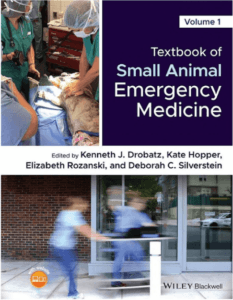

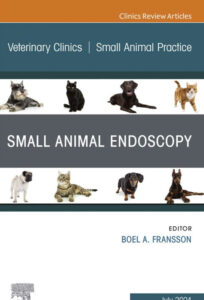
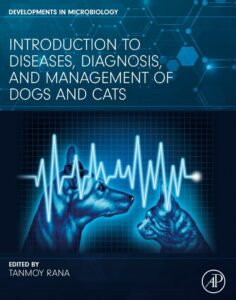
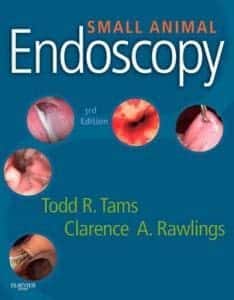
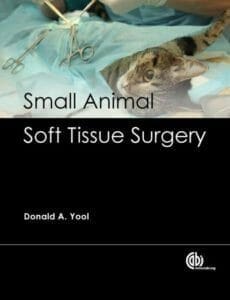





![Ettinger’s Textbook of Veterinary Internal Medicine 9th Edition [PDF+Videos] Ettinger’s Textbook of Veterinary Internal Medicine 9th Edition [True PDF+Videos]](https://www.vet-ebooks.com/wp-content/uploads/2024/10/ettingers-textbook-of-veterinary-internal-medicine-9th-edition-100x70.jpg)

![Textbook of Veterinary Diagnostic Radiology 8th Edition [PDF+Videos+Quizzes] Thrall’s Textbook of Veterinary Diagnostic Radiology, 8th edition PDF](https://www.vet-ebooks.com/wp-content/uploads/2019/09/textbook-of-veterinary-diagnostic-radiology-8th-edition-100x70.jpg)






